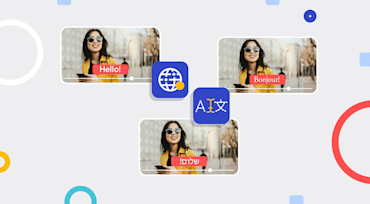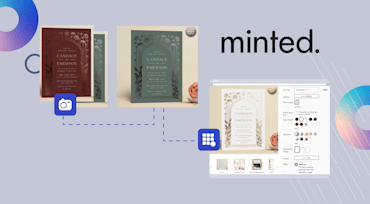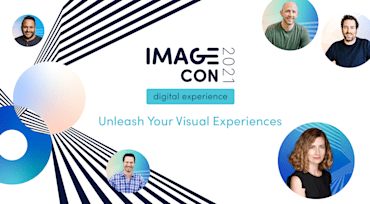As online interactions multiply exponentially, visual media has become the most significant venue for delivering the benefits of what used to be in-person contacts. With this in mind, companies have completely shifted their digital strategies for consumer experiences, taking a media-first approach in how they interact and engage.
We are now seeing this populate across our favorite websites. For example, with new travel restrictions in place, Levi’s wholesale distributors weren’t able to browse the brand’s physical showrooms to identify and purchase new merchandise. Guided by a media-first mantra, Levi’s launched a digital showroom that replicates the immersive visual experience of physical shopping. They quickly introduced 360-degree product views of 40,000 seasonal items, and continue to do so as soon as new items enter their catalog.
Now, their wholesale buyers can buy with confidence from anywhere. Just as importantly, however, the initiative did not require a business overhaul or an all-hands-on-deck maneuver. Rather, it was the outcome of aligning business goals with a media-first strategy that made it possible to pivot on a dime to serve evolving customer needs.
To help you deliver the same level of digital value to your customers, this blog will detail how a media-first strategy enables you to:
- Achieve customer-centric business goals and create immersive experiences at scale.
- Align your brand with your audience’s emotional and analytical preferences, which are often shaped by dynamic and unique pop culture phenomena
- Become relevant, adaptable, engaging, and trusted by customers.
- Remain competitive today and prepare your business for growth as you expand product lines, launch channels, and integrate technologies.
Media-First Introduces Dynamic Engagement
Visual media enables and accelerates the return from every other part of your online engagement strategy. By putting visual media at the core of everything you do, it becomes possible to develop, deliver, maintain and optimize the impact of each touchpoint, such as:
- Killer website pages – Images and videos attract and convert attention far better than text. For example, studies have shown that four times as many people prefer to watch a video about a product than read about it.
- Real-time social media - Consumers are 40x more likely to share visual content on social media than on other forums. For optimal efficiency and peace of mind, be sure to automate the customization of your visual media for the social channels, apps, devices, and browsers on which they are displayed.
- User-generated content (UGC) - Customer-generated content, especially reviews accompanied by pictures and videos that showcase real-life application of the products, are an invaluable reference for shoppers. Check out our UGC whitepaper for actionable advice for getting the most out of UGC.
- Peer-to-peer conversations – Microbrowsers (WhatsApp, Slack, etc.) offer miniature visual previews of web pages inside private, brand-absent conversations, making for a huge opportunity to drive interest in and traffic to your high-performing product pages.
- Third-party marketplaces and on partner platforms – Promote your content and products through third-party and partner channels with the best content possible, while protecting your brand’s authenticity and voice outside of your owned channels.
Future-Proof Your Business
To deploy all the foundational requirements for visual media described above, and to prepare your business for whatever other visual opportunities lie ahead, it’s important to start layering AI into your media-management process. Ideally, this would mean deploying an AI-enabled media management platform like a DAM. AI can independently and intelligently manage and optimize a limitless library of assets for all use cases and user context, delivering interactive experiences with no human involvement.
With AI, you can move fast and execute on countless otherwise complex and time-consuming media capabilities that have delivered remarkable results for early adopters, including:
- Automation - In order to simplify the entire storage-to-delivery process and free up internal resources to create greater value for customers and the brand, AI automates mundane processes such as cropping images and videos, optimizing delivery for devices, sourcing and deploying user generated content and more.
- Personalization - 80 percent of shoppers are more likely to buy from a company that offers personalized experiences even in the face of higher prices. AI delivers context-specific modifications for every customer to support corporate goals.
- Real-time customization - Seventy-seven percent of shoppers would pay more for a brand that offers real-time customization, and those brands that offer real-time customization stand to boost their profits by up to 15 percent.
- 360-degree product views - By adding more clarity to the interaction, you can lengthen page/site visits and boost conversion rates by up to 30 percent while lowering return rates by as much as 50 percent.
AI Introduces New Efficiencies
As more opportunities for engaging with customers and promoting products arise, such as augmented and virtual reality, a media-first approach supported by an AI media platform provides the automated workflows and processing power your teams will need to execute any campaign they come up with.
You can learn how to execute an effective media-first strategy step by step in our whitepaper on The Media-First Approach, including tips and advice on how to:
- Master the basics of visual media
- Take advantage of technology
- Empower teams
- Upgrade and refine your processes
You check out our Guide to Building the Ultimate E-commerce Website to dig even deeper.





